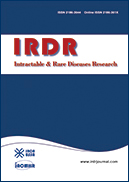Volume 2, Issue 3
Displaying 1-6 of 6 articles from this issue
- |<
- <
- 1
- >
- >|
Policy Forum
-
2013 Volume 2 Issue 3 Pages 72-76
Published: August 31, 2013
Released on J-STAGE: April 16, 2014
Download PDF (245K)
Reviews
-
2013 Volume 2 Issue 3 Pages 77-87
Published: August 31, 2013
Released on J-STAGE: April 16, 2014
Download PDF (324K) -
2013 Volume 2 Issue 3 Pages 88-93
Published: August 31, 2013
Released on J-STAGE: April 16, 2014
Download PDF (303K) -
2013 Volume 2 Issue 3 Pages 94-97
Published: August 31, 2013
Released on J-STAGE: April 16, 2014
Download PDF (192K)
Brief Report
-
2013 Volume 2 Issue 3 Pages 98-102
Published: August 31, 2013
Released on J-STAGE: April 16, 2014
Download PDF (1100K)
Commentary
-
2013 Volume 2 Issue 3 Pages 103-105
Published: August 31, 2013
Released on J-STAGE: April 16, 2014
Download PDF (250K)
- |<
- <
- 1
- >
- >|
